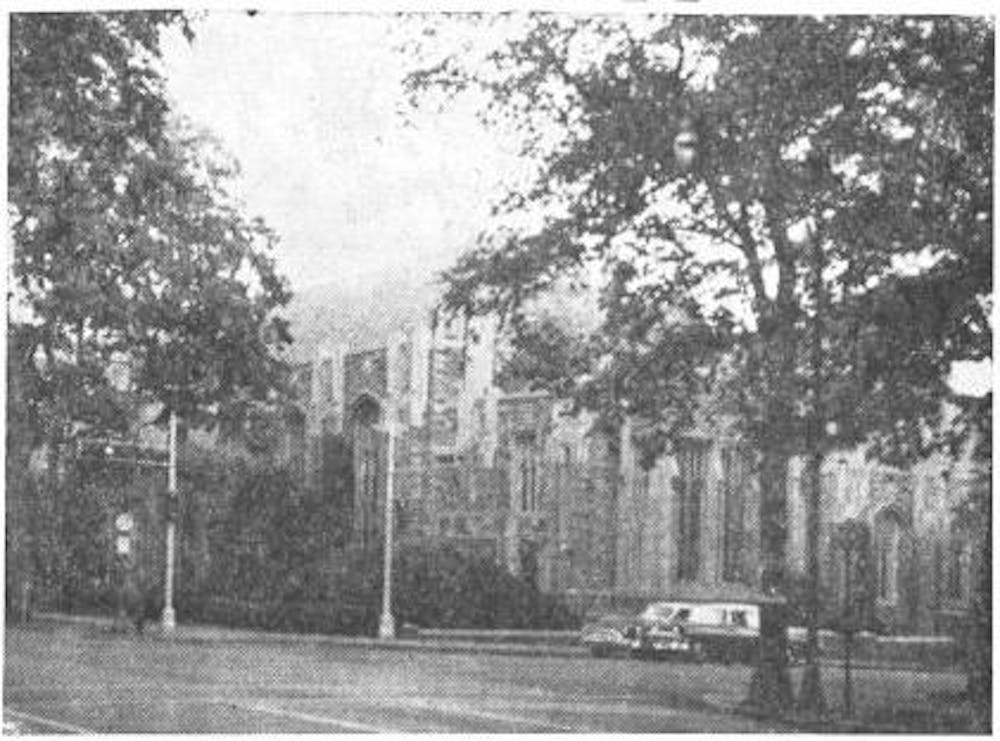“Preliminary planning of residences with social and dining facilities may signify a complete overhaul of the Princeton social system,” reported The Daily Princetonian on November 21, 1956.
Around that time, the University announced plans to change dormitory life at Princeton in hopes of integrating social life into living spaces. While the residential college system would not be officially established until 1982, starting in the 1950s University officials were already seeking an alternative to a social structure dominated by the eating clubs.
This decades-long concern over Princeton’s eating club culture came to a head recently, when the University announced that all undergraduates living on campus, including students in eating clubs, would be required to purchase a meal plan starting in Fall 2026.
In 1956, Princeton, a much smaller, all-male institution, handled residential life in a way unrecognizable to any Yeh Yeti or Whitman Whale today. Almost everyone lived in the classic collegiate Gothic buildings that now make up Rockefeller and Mathey Colleges and upperclassmen student housing. Only one kitchen was operated by the University in Madison Hall, then known as the Commons and now affectionately called RoMa. All first-years and sophomores ate family style meals in the Commons.
Meanwhile, the entire upperclass student body dined in eating clubs, which were all Bicker at the time. While every sophomore secured a spot in a club, an anonymous ‘Prince’ column described the process of achieving 100 percent membership as “agonizing.” That may have motivated the University to discuss new facilities as an alternative to the eating club system.
By 1957, the pressure reached a boiling point and the 100% participation of students in Bicker broke. With a more financially and geographically diverse student body, concerns were raised over the domination of “old-fashioned” Prospect Street. The ‘Prince’ speculated that the interest in creating a residential college system “resulted from [a] failure to achieve social integration through eating clubs.”
To relieve the pressure, Wilson Lodge emerged in 1957. The precursor to First College and today’s residential system, 13 sophomores elected to dine in the University’s Wilson Lodge facility. That meant Princeton had finally started to catch up to Harvard and Yale, who had created college systems in the 1930s that combined student’s living, eating and social life, bringing the systems first established at Oxford and Cambridge across the pond.
Wilson Lodge became an influential force in breaking the eating club monopoly. Members of the facility wrote in a letter to the ‘Prince’ that one hundred percent admission to eating clubs in recent years “would never have been achieved without force… the pressure has been to make individual people fit into a pattern already long established and fairly unchangeable.” But the then Sophomore Class president, J. Douglas Wilson ‘59 cautioned that Wilson Lodge alone would not solve the Bicker issue.
Today, the Eating Club scene remains enticing to students, and the Interclub Council (ICC) attempts to find all interested students a home on The Street. During Street Week in 2024, 80% of the class of 2026 participated. Despite the class’s precedented size, the ICC failed to place less than one percent of students into a club.
The University has had an ever-evolving relationship with the eating clubs since their beginning. In 1906, former university president Woodrow Wilson expressed concern over the “evils” of “the segregation of sophomores from other undergraduates” and “the upper classmen’s temptation to seek social advancement by choice of associates, tending toward snobbishness and incident extravagance” within the eating clubs.
The University’s latest dining proposal similarly initiated backlash from the clubs, who launched a campaign called “Don’t Harvard our Princeton” in protest. Weeks later, the University announced it would cover the cost of the required meal plan for eating club and co-op members, but kept the requirement for independent students.
The 1956 announcement echoed the same concerns raised today over the risks the new systems would pose to club life. In 1956, the ‘Prince’ wrote “the conversion would lead to a remarkable decline for the private eating clubs, some of which would go out of business entirely.” Today the concern remains over the fate of Prospect Street. Can clubs meet 100% of demand?
Katharine Shea is a contributing Archivist for the ‘Prince.’ Please send any corrections requests to corrections[at]dailyprincetonian.com





